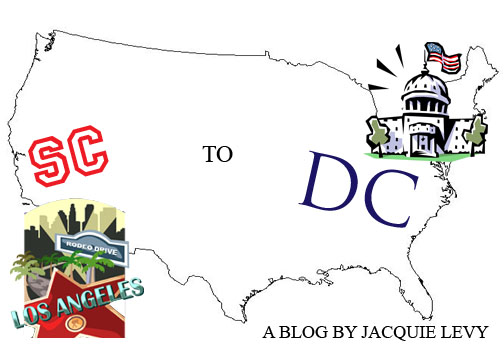Yesterday we went to the Newseum, probably my favorite museum to date. One of the random guys who worked there was chatting with my friend and when I walked up to them my friend introduced me as a student journalist and an aspiring reporter. The man said, "I usually tell the guys that come to the museum and say that they want to be reporters to go out and get one of those blue suit jackets and just wear it around and maybe CNN or someone will come pick them up and put them on air." For the last three years since I have been serious about pursuing a career in broadcast journalism and have been working my butt off to do so, I can't tell you how many times I've argued with people who think that being a news reporter is just looking good on camera and having dramatic diction (thank you to the movie Anchor Man for perpetuating this stereotype). But despite what that minimum wage museum attendant said, I don't know that I've ever felt more proud of my career choice than I did that day at the Newseum.
Going through the Newseum that day made me realize that every event in history, major or minor, dangerous or mundane, has been recorded and documented by reporters. Journalists truly do record the first draft of history, and in many situations put their lives on the line to tell the stories of those people whose voices wouldn't otherwise be heard.
The 9/11 exhibit was a really powerful example of this point. I was sucked into this room with a video playing that told the story of all the photojournalists and broadcast journalists who ran directly into the devastation that was Ground Zero right along with rescue crews, to bring the rest of the nation and the world the story. One photographer had a special wall dedicated to his photos, 3 cameras worth, that were salvaged when rescue crews found his body.
The exhibit also has a portion of the wrecked broadcast antenna from one of the World Trade Center Towers, displayed in front of a wall of front pages from newspapers of all 50 states and 43 other countries.
Another central theme of the Newseum, was freedom of information. Few things are more contradictory to this very idea than the Berlin Wall, also on display.
Along those same lines, was the exhibit on how the freedom to disseminate information varies from country to country. This map illustrates those countries where there is complete or nearly complete freedom of press in green, moderately free press in yellow, and restricted or no free press in red...it's almost hard to believe how little green there is on that world map.
After leaving the Newseum, my roommate and I being outnumbered by the boys wound up eating lunch at Hooters...from the Newseum to Hooters? Really? In any case, I managed to continue on an intellectual conversation while waiting for my wings with one of my other friends here from SC, an international student from Singapore. We were discussing how his country was red on that map, and we had an interesting exchange of ideas about whether or not sacrificing certain freedoms for securities was worth it. I think we found that there isn't necessarily a clear answer to this question, but let me clarify we both agreed that China's restricting their citizens use of Google and Facebook is totally bogus. A life without Google or Facebook seems hardly worth living at all.







No comments:
Post a Comment